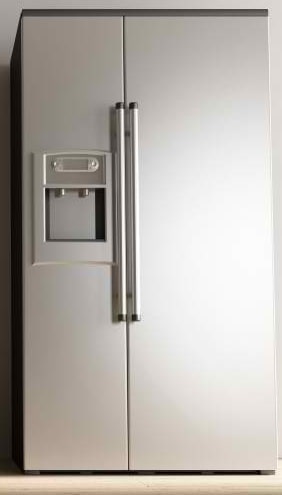You can prepare your kitchen appliances for the holidays by cleaning, inspecting, and maintaining them before guests arrive and the cooking marathon begins. This simple preparation prevents breakdowns, improves energy efficiency, and keeps your kitchen running smoothly when you need it most. In this guide, you’ll learn how to freshen up your refrigerator, safely clean your oven and cooktop, teach guests the right way to load the dishwasher, reduce refrigerator energy use, and eliminate unpleasant odors from your garbage disposal. Each step not only helps your appliances perform better but also extends their lifespan, so you can focus on enjoying the celebrations instead of dealing with mid-feast malfunctions.
 1.) Give your refrigerator an interior facelift.
1.) Give your refrigerator an interior facelift.
Soon you’ll need refrigerator space for leftovers. Take care of that now and save yourself a headache later. Check the expiration dates on condiments and other products that hang out in refrigerators for extended periods. Odds are that you have a few items that should be escorted to the trash bin.
Use hot, soapy water to wipe down refrigerator door gaskets and the interior drawers and shelves.
To keep your refrigerator smelling fresh, use a deodorizer that’s specially formulated for refrigerators. This is our favorite.
2.) Clean your range/stove/oven/cooktop.
Cleaning your most important cooking appliance is a wise idea because grease and other flammable liquids may cause problems for your machine – at the worst time.
Spray oven cleaner should never be used on a self-cleaning oven. It will eat away the factory-made coating on the oven walls, floor and ceiling.
Dirty drip bowls/pans? Replace them when they get dirty. They radiate heat back at the pan which improves efficiency. More dirt = reduced cooking efficiency = problems.
Have a smooth glass cooktop? Avoid abrasive scrub pads, as they can leave permanent scratch marks. Use a standard cooktop cleaner or a non-abrasive cleanser.
Related videos:
3.) Teach your helpful guests how to load the dishwasher the right way.
Your dishwasher will be working overtime to wash dishes and cookware not frequently used. When well-intentioned family members place mugs in the bottom rack, tell them that RepairClinic.com recommends dirty, large items be loaded in the bottom rack – closest to the spray arm for best cleaning. Mugs and other small items should be placed in the top rack.
Other dishwasher tips:
- Despite what your mother-in-law may say, pre-rinsing dishes is still a waste of time but it is wise to scrape away large chunks of food before placing them in your dishwasher.
- To avoid any leaking disasters, check your dishwasher’s door seals, which are known to tear easily. If you find tears, you should replace them immediately.
- For a fresh dishwasher, use a cloth to wipe the space near the bottom of the door and the bottom front of the tub to prevent mold growth.
- Is your glassware looking foggy? That’s called etching and it caused by using too much detergent.
Related video:
4.) Reduce refrigerator energy consumption.
 (Remember to disconnect power to your refrigerator before cleaning or performing any kind of maintenance.)
(Remember to disconnect power to your refrigerator before cleaning or performing any kind of maintenance.)
Did you know that a refrigerator’s job isn’t to cool but rather to remove heat? For this, it relies on the proper functioning of its coils. Unfortunately, coils are also dust, dirt and pet hair magnets. Layers of this dust make it harder for the refrigerator to remove heat efficiently. Cleaning the condenser coils will reduce energy consumption and your electric bill.
Some refrigerators have large, black radiator-like coils located at the back. Coils on these models can be cleaned by gently brushing away dust and dirt. A long-handled bristled brush works best. Consider this one.
More commonly, coils are located beneath the refrigerator. This makes them dust and dirt magnets and significantly more vulnerable to problems if not cleaned every 12 to 18 months. If you have pets, you may need to increase cleaning frequency to every six months, as pet fur and hair are known to form thick layers quickly.
On these models, you can access the coil by removing the bottom grill or kick-panel located at the front or an access panel at the back. A flashlight will be helpful in this dark area to prevent any damage to the fan. Using your vacuum’s crevice attachment or a convenient long hose attachment, carefully remove dust and fur on and around the coil. Consider this brush, which is also great for cleaning beneath other large appliances. Be sure to remove stubborn dirt by gently running a long-handled bristle brush over the coil. Vacuum again, if necessary, and restore power to the unit.
Have a torn door seal? Then your refrigerator is working extra hard to get rid of heat. Fix it and reduce energy consumption. RepairClinic has replacement gaskets and seals. With your refrigerator’s model number handy, head here.
Related video:
5. Freshen up your garbage dispose.
Potato peels, husks, celery and other fibrous foods can cause problems for your garbage disposer (a.k.a. disposal) so it’s best to keep them away from your sink or cut them into small pieces before putting them down the disposer.
Smelly disposer?
While running the disposer and the faucet, pour in a solution of one gallon of water and one half cup of bleach. This will destroy odor-causing bacteria.
We use these biodegradable, non-toxic cleaning pellets to eliminate disposer odors naturally:
Your disposer’s splash guard is a bacteria haven. Some disposer models have replaceable splash guards; consider replacing it if you have trouble eliminating odor.
Related video:
We wish you wonderful gatherings and celebrations with your family and friends over the coming weeks.